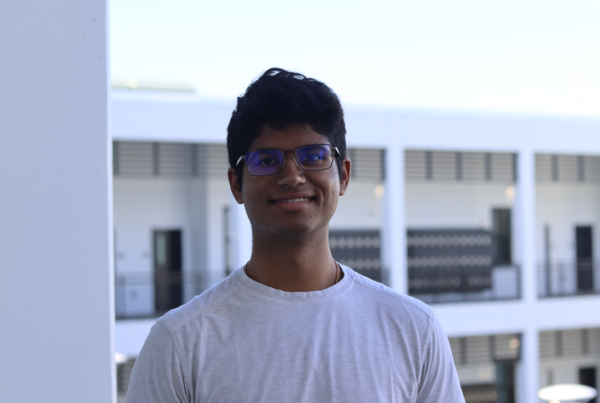Over the past decade, Tampa has begun to grow exponentially, becoming one of the fastest-growing cities in the United States. With the large influx of new residents, home prices and rent have skyrocketed to new highs. For the past few years, much of this has been concentrated in the Downtown and Hyde Park areas, however, gentrification has taken root in the South of Gandy (SOG) community as well.
“The gentrification has already happened out here,” said Stephanie Poynor, leader of the neighborhood advocacy group, Stop Overbuilding SOG. “So much of what was here when I moved here 11 years ago is gone. It used to be a solid blue-collar area…now folks who’ve lived here their whole lives can’t really afford to live here.”
Increased rent is an issue affecting Robinson students, such as Shoira Afandikhonova (’24), as well.
“Forcing people out of the area they live in makes it harder to find new housing with the same conditions,” said Afandikhonova, who had to move three years ago due to increases in her rent. “The financial pressure is already an issue and it keeps adding on to that.”
However, displacing people from their homes and neighborhoods is only one consequence that Tampa’s growth has had on the SOG community, the other is overbuilding.
Overbuilding is when an area is developed so rapidly that not only do prices rise and costs increase, but the infrastructure of the area is outpaced by the subsequent population growth which follows sudden development. Historically, the SOG area has been very residential, littered with single family homes. Because of this history of low population density, the outdated infrastructure of the area is really only equipped to handle that type of population.
“I’ve noticed that they’re tearing down a lot of older houses and trying to fit two or even three houses where only one used to be and it looks really cramped to the point where they hardly have any yard space,” said Nina Rubio (’26), an SOG resident. “In my neighborhood, there are a lot of older houses, but since new, wealthier people are moving in they are tearing down a lot of the houses to build townhouses and more modern houses.”
The building of townhouses is perhaps the most mild example of the overbuilding of SOG. Many SOG residents have noticed the encroachment of apartment buildings in the historically low-population density areas.
“Now total down here, South of Gandy, they have almost doubled our dwelling units,” Poynor said. “We started at about 10,000 units, and once they get everything built, it’ll be 19,996 units.”
The strain on infrastructure, especially roads, caused by overbuilding, is an extremely important issue. With much of SOG being in a flood zone and with increasing occurrences of hurricanes and severe weather patterns due to climate change, evacuating from SOG is a factor that needs to be taken into consideration.
“McMansions [are] an issue because people either don’t like it aesthetically, they feel crowded, they feel there’s flooding, but that’s better than a huge multi-family,” said Bill Carlson, City Councilman for District 4. “Huge multifamily creates really bad traffic issues. And what we find, the coastal high hazard issue is important because when MacDill declares evacuation, which is usually an hour or two before the county does…you can’t get out. And then the county declares evacuation, there’s gridlock everywhere. There’s no way for people to escape.”
Although a plethora of issues are caused by this rapid development of SOG, some are seeing the positive effects of the economic development.
“I think some upsides [to the development] are that there is more money going into schools, and the neighborhoods have become nicer,” Rubio said.
While economic development tends to bring nicer neighborhoods and jobs, historically, economic development in Florida has been synonymous with real estate development and population growth which is what is being seen in SOG. However, Carlson claims that these are not mutually exclusive.
“I am pushing to change planning, make planning around people instead of buildings,” Carlson said. “If we plan around people, we can still build buildings, but we’ll build them in a way that is productive, creating a more positive community…. But, we need to focus on real economic development [bringing in different industries] which is helping to grow our local companies.”


